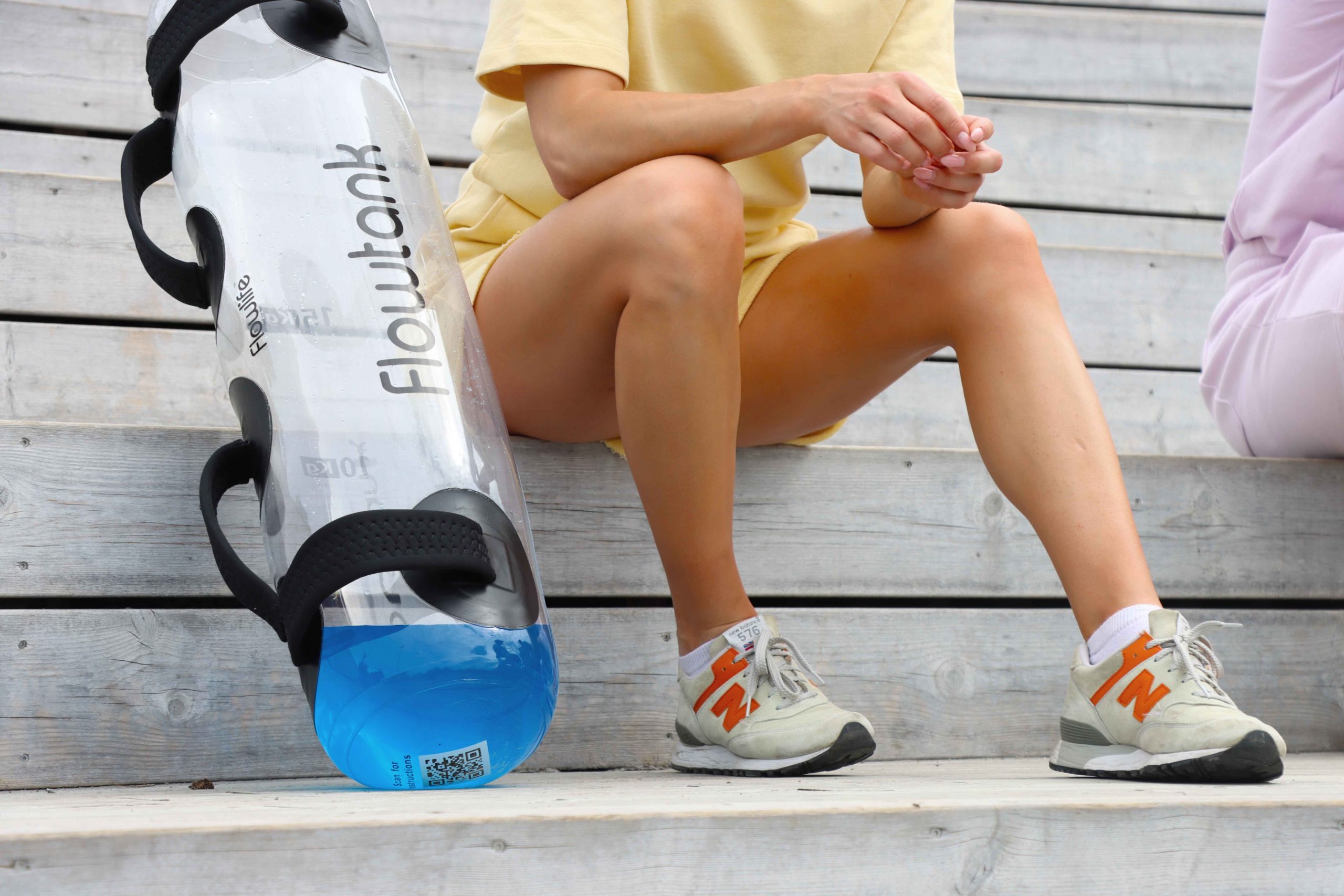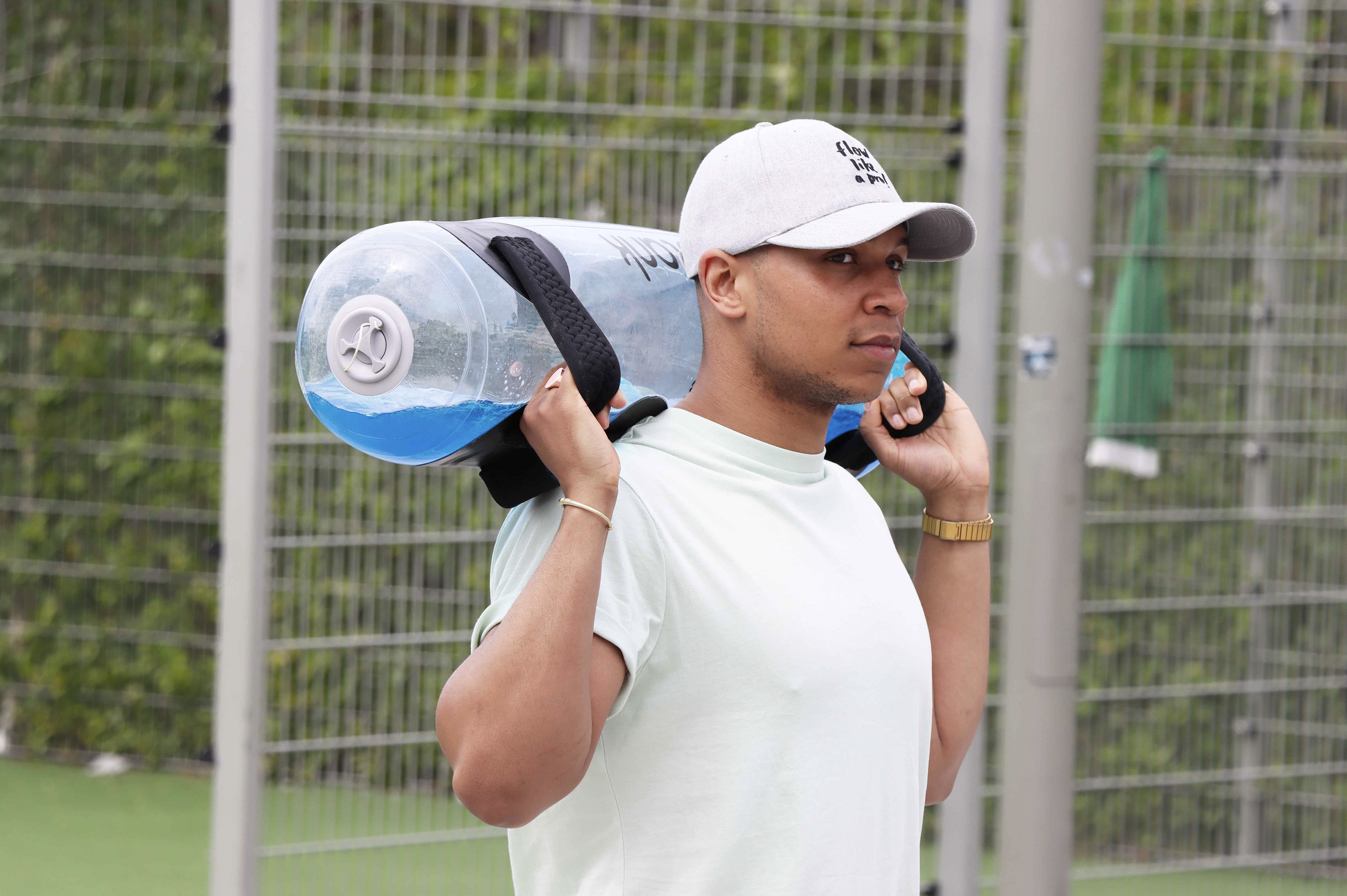The science behind Flowtank
Flowtank captures the natural force of gravity on an object or mass to encourage good exercise. Specifically, it uses the force of gravity on liquid or water to produce the flow. Water’s sensitivity to kinetic energy and movement has a rapid change in motion. Here, kinetic energy can be explained simply as the energy of an object resulting from an action it is subjected to or given. Think of how a pebble touches a large body of water and creates lots of ripples spreading across a wide area. This shows the effect just a small amount of kinetic energy has on the motion or flow of water.
When the Flowtank or a sealed object containing water (such as a half-full bottle or Flowtank) is subjected to kinetic energy, we get large bursts of motion. A total movement of energy is created, a macro trend, and we can predict what this movement will be using our cognitive ability. For example, if we turn the Flowtank from left to right, we understand that the water will follow in the same direction due to the structure and density of the liquid, the shape of the sealed object, the friction the liquid is working against, and the law of gravity. But there will also be countless micro-movements in the fluid that will cause the weight to shift. It is usually challenging for humans to predict these movements because they involve many forces acting in different directions.
Proprioception and muscle sensory organs
When we make musculoskeletal movements, many contractions/muscular tensions occur in many of the body’s muscles. During these movements, the length of our muscles lengthens and shortens, as does the size of the muscle fibers. Our muscle fibers contain something called muscle spindles. These sensory fibers measure how much the muscle is stretched and how quickly the muscle fibers stretch when the power is lengthened. We also find sensory organs called Golgi tendon organs in the muscle tendons that attach to the skeleton. These tiny organs are arranged in series that record the muscle's force to stretch. Via the nerves, these provide feedback to the central nervous system and spinal cord, resulting in the pulled muscle being tensed or relaxed to protect it from injury or overstretching. These functions also give us bodily awareness, a sense of the position of the parts of our bodies and how and where we are moving. Known as proprioception, this is an essential muscle and nerve function for survival and the way the body functions. (Boron & Boulpaep, 2012)
Flowtank and the effect of proprioception in training
The clever thing about Flowtank and the movement of the water is that these micro-movements and forces generated in all directions lead to us dealing with a whole range of forces acting on biomechanics and movement patterns. Our muscles must react extremely quickly to keep control of the movements with almost instantaneous muscle tension and relaxation. There is a rapid response when muscle fibers are stretched and lengthened at high speed. We learn to work and react with our muscles quickly, which can also make us cognitively more prepared for rapid changes that require us to react against them. It also means that we are training proprioception, a vital muscle function.

Physiological effects of proprioception - in practice
As Flowtank can be used to train both upper and lower limbs, we see excellent responses from the smaller muscles in and around the ankles/hip (including supinators and pronators), as well as the stabilizers in the shoulders (rotator cuff) and the spinal proprioceptors (including the transversospinales along the spine).
-
A systematic review extrapolating data from 24 studies involving training focused on proprioception and injury prevention in the knee, particularly the cruciate ligament, found that proprioception training has a good effect on reducing the incidence of these injuries (Dargo, L et al., 2017).
-
A meta-analysis analyzed and evaluated how well proprioceptive training for the ankle could limit the incidence of injury in athletes and the overall effect of this type of training. It concluded that the joint sensation around the feet was strengthened, the risk of injuries such as sprains was reduced, and neuromuscular control was increased (de Vasconcelos G et al., 2018).
-
Yet another meta-analysis evaluating proprioceptive training of the ankle among athletes found good evidence that proprioceptive training of the ankle had a good effect in alleviating injury risk and incidence in frequently sprained ankles (Schiftan, G et al., 2018)
References
Boron, Walter F., Boulpaep, Emile L. (2012). Medical Physiology, Second Edition. P. 406.
Dargo, L., Robinson, K. J., & Games, K. E. (2017). Prevention of Knee and Anterior Cruciate Ligament Injuries Through the Use of Neuromuscular and Proprioceptive Training: An Evidence-Based Review. Journal of athletic training, 52(12), 1171–1172. https://doi.org/10.4085/1062-6050-52.12.21
de Vasconcelos, G. S., Cini, A., Sbruzzi, G., & Lima, C. S. (2018). Effects of proprioceptive training on the incidence of ankle sprain in athletes: systematic review and meta-analysis. Clinical rehabilitation, 32(12), 1581–1590. https://doi.org/10.1177/0269215518788683
Schiftan, G. S., Ross, L. A., & Hahne, A. J. (2015). The effectiveness of proprioceptive training in preventing ankle sprains in sporting populations: a systematic review and meta-analysis. Journal of science and medicine in sport, 18(3), 238–244. https://doi.org/10.1016/j.jsams.2014.04.005

